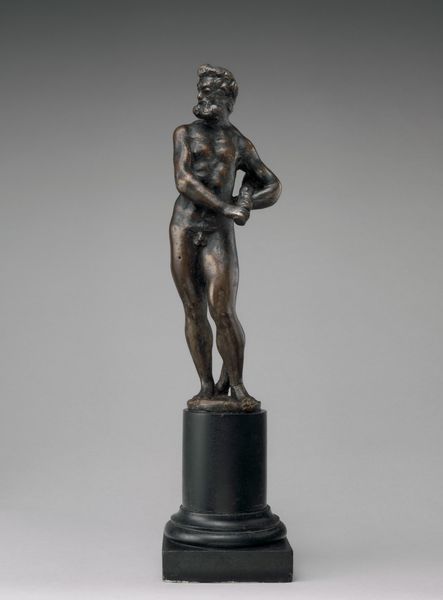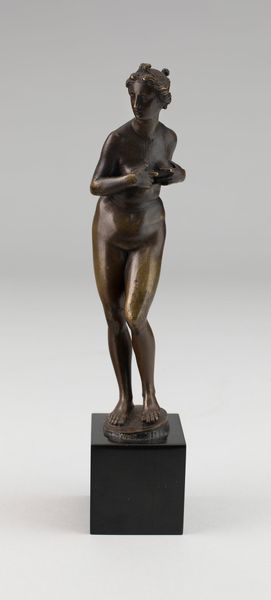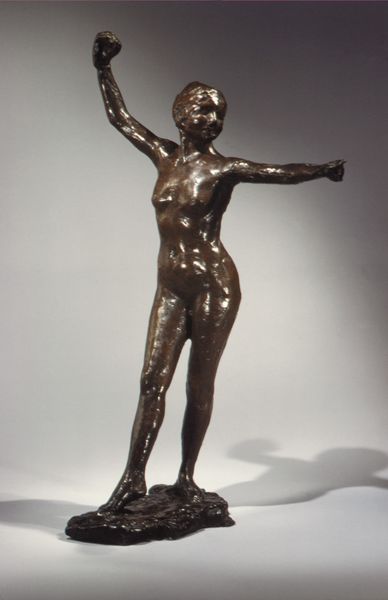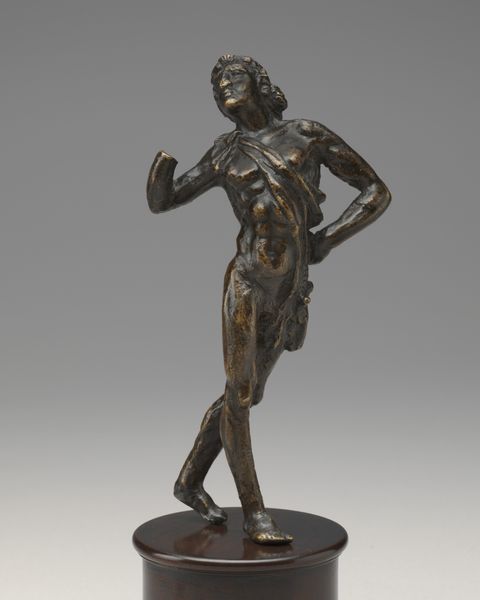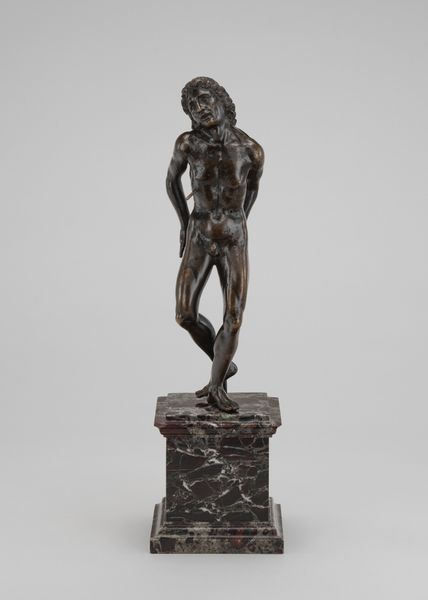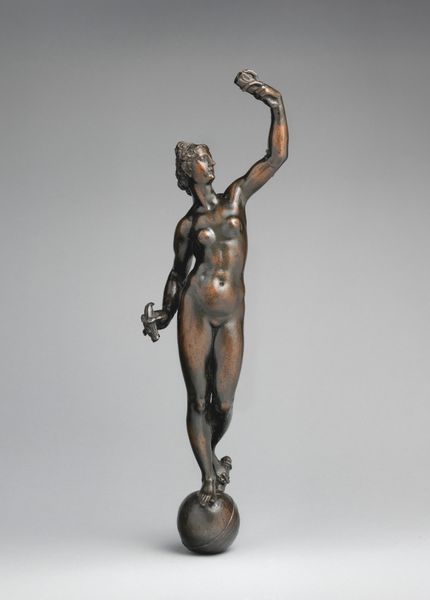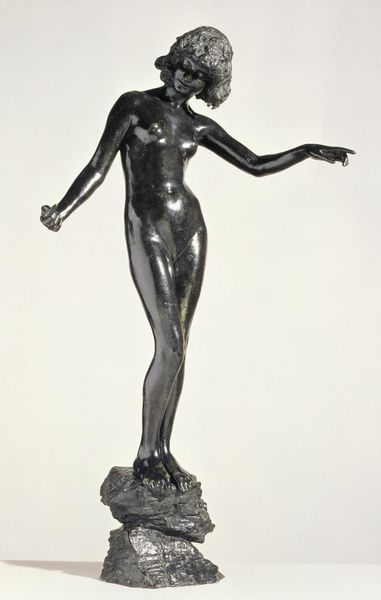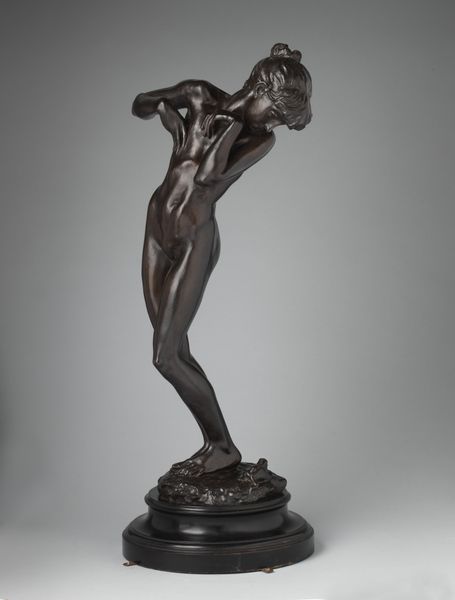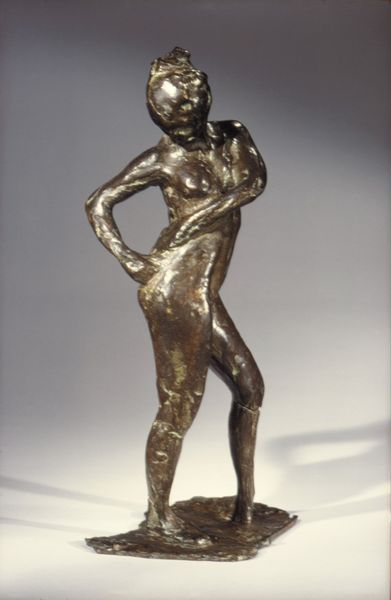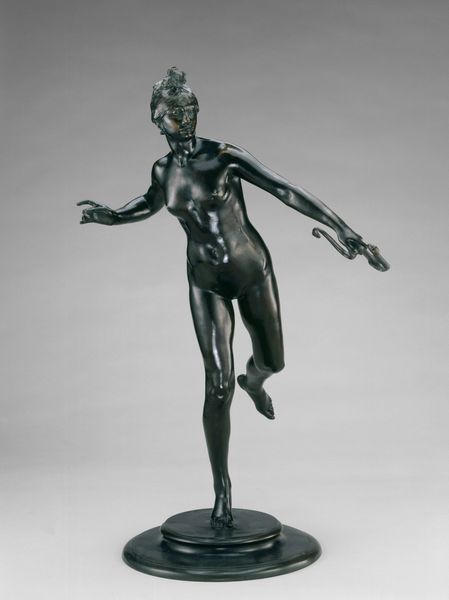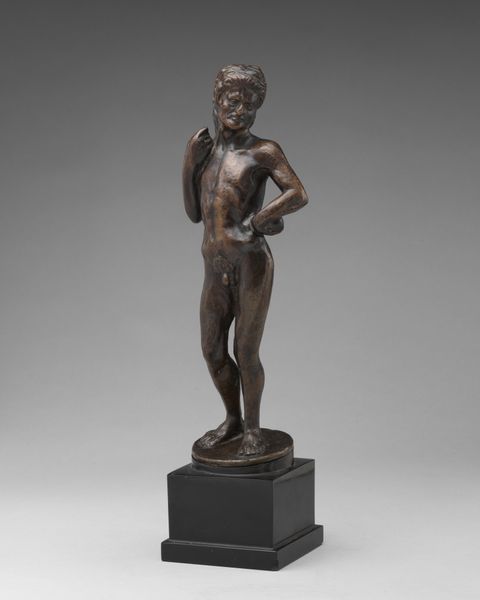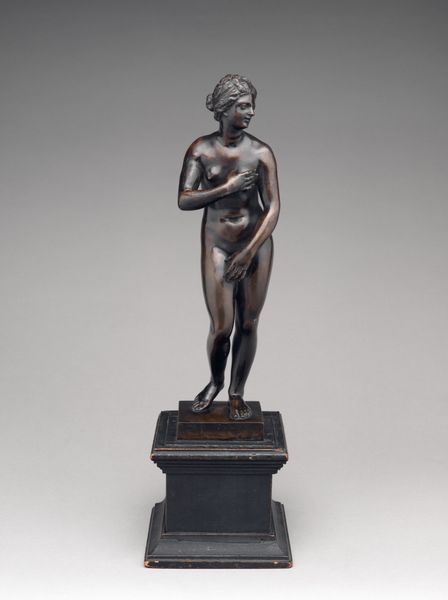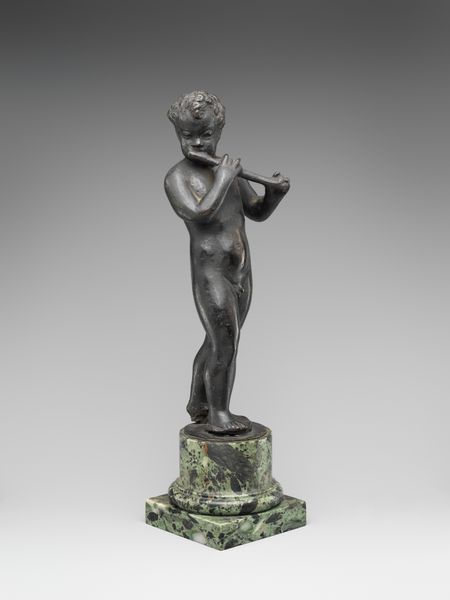
bronze, sculpture
#
portrait
#
sculpture
#
bronze
#
mannerism
#
figuration
#
sculpture
#
nude
#
statue
Dimensions: height 14 cm, height 19.1 cm, width 5.4 cm, depth 5.4 cm
Copyright: Rijks Museum: Open Domain
Editor: So this is Niccolò Roccatagliata's bronze sculpture, Venus, dating back to around 1600. It's a relatively small piece, but the smooth, dark bronze gives it a striking presence. What can you tell me about this sculpture? Curator: Roccatagliata's Venus, with her apple, is laden with symbolism reaching far beyond a simple depiction of beauty. The apple itself, offered in her hand, whispers of temptation, choice, and the very dawn of consciousness. The sculpture invokes layers of cultural memory that associate Venus with not just beauty but also a pivotal point of human understanding. Doesn't her slightly averted gaze suggest that internal struggle? Editor: Yes, I see what you mean. It’s like she's contemplating something significant, even burdened by it. The contrapposto pose also seems less about idealized beauty and more about…hesitation? Curator: Exactly. The Mannerist style here leans into artifice. Her posture and the slightly elongated limbs amplify a sense of emotional complexity. Remember, in that period, artists were keen on embedding meanings that the educated viewer would unlock. This Venus is both goddess and a stand-in for the viewer, contemplating morality itself. Do you think her small scale affects that feeling of intimacy with her internal struggle? Editor: I think so. Its size makes it more like a personal reflection, not just a grand statement about idealized beauty. It brings the myth to a human scale, really. Curator: And isn’t it amazing how the sheen of the bronze manages to preserve those meanings, connecting us across centuries to these fundamental human dilemmas? It reminds us that those struggles transcend time, recast through enduring symbols. Editor: It’s definitely given me a new appreciation for the sculpture’s cultural weight. It is amazing to consider such a small figure is loaded with this much human thought and consideration.
Comments
rijksmuseum about 2 years ago
⋮
Venus stands on her right leg on a round pedestal, with her left leg bent. Her upper body leans slightly forward. She holds an apple in her right hand and gazes at it, with her left hand against her chest. Her wavy hair is gathered in a knot on top of her head. No other art form expresses Renaissance ideals as powerfully as bronze statuettes and everyday objects. Bronze, a precious and durable alloy of copper and tin, was the main material, along with marble, in which art works of Classical antiquity were preserved. During the Renaissance, many bronzes were modelled on excavated ancient Roman statues. Gods and heroes were favourite themes.
Join the conversation
Join millions of artists and users on Artera today and experience the ultimate creative platform.

